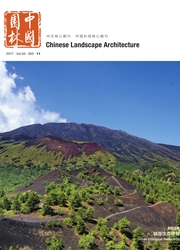

 中文摘要:
中文摘要:
将地理信息与空间规划设计相结合的地理设计理念为乡村规划提供了新的思路。为了探索该理念对乡村景观规划的适用性与优缺点,本文利用了基于地理设计理念的多尺度空间分析和多景观要素分析的方法,将量化的信息与规划的空间紧密结合。通过对地理信息的整合处理,提取出了林盘样本场地的量化特征以指导规划;确定了研究对象在集水单元与汇水区两个尺度的边界;综合叠加了"山水林田路居"六项景观规划要素。规划过程显示,以地理设计理念展开的多尺度、多景观要素的空间分析可以对信息少、面域大、边界复杂、地理环境有特色的乡村地区展开更加深入的规划研究,对我国类型多样的乡村规划提供更广泛的规划支持。但地理设计理念的多情境管理、循环评价等内容亟需在乡村规划中配合开展参与式规划以发挥其优势。
 英文摘要:
英文摘要:
Geo Design brings a new research approach for rural landscape planning. To explore the possibilities and advantages of the application in rural planning, our research examines the method of multi-scale and multi-factors landscape elements analyzing, which are based on the Geo Design approach. At the same time, the methods combine the quantitative geo-information with the physical planning spaces. Both the sample Linpan landscape features and multi-scale research boundaries are achieved by the GIS analysis. Six landscape element layers(mountain, water system, forest, farmland, road system and settlements) are mapped and integrated. They provide the possibility of further research on the target area and planning object. The conclusion shows the advantages of the Geo Design in rural areas, which has limited of planning information, huge area(including mountains) as well as, the inexplicit planning and research boundaries. Geo Design would obtain open geo-science data for both further rural planning research and rural landscape planning applications.
 同期刊论文项目
同期刊论文项目
 同项目期刊论文
同项目期刊论文
 期刊信息
期刊信息
